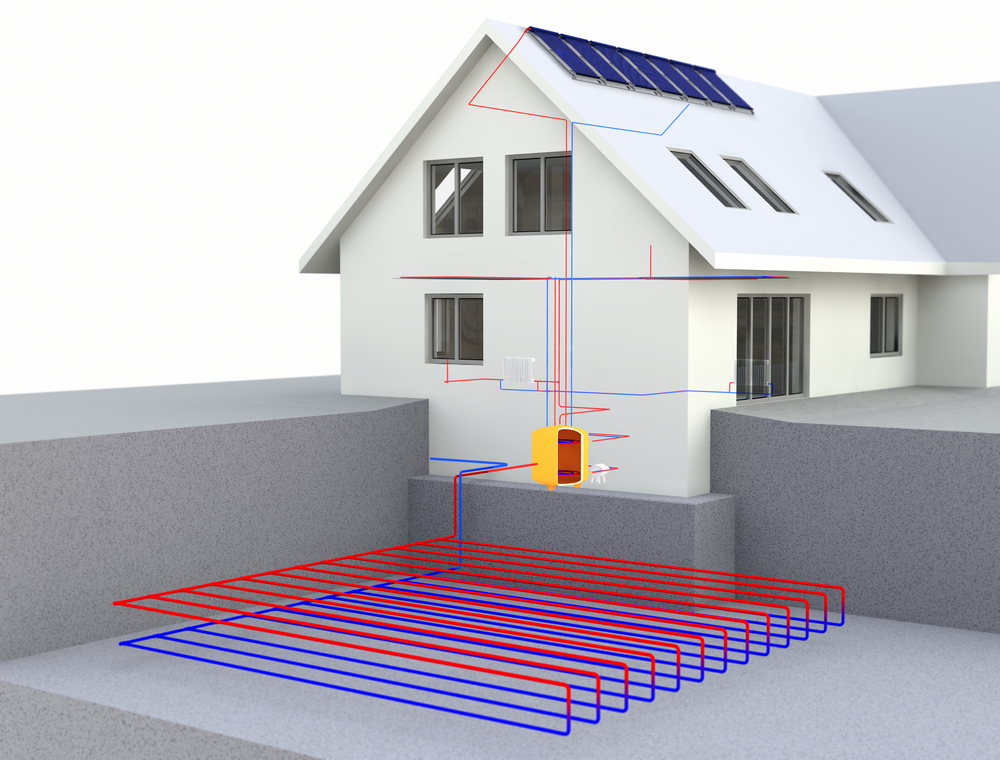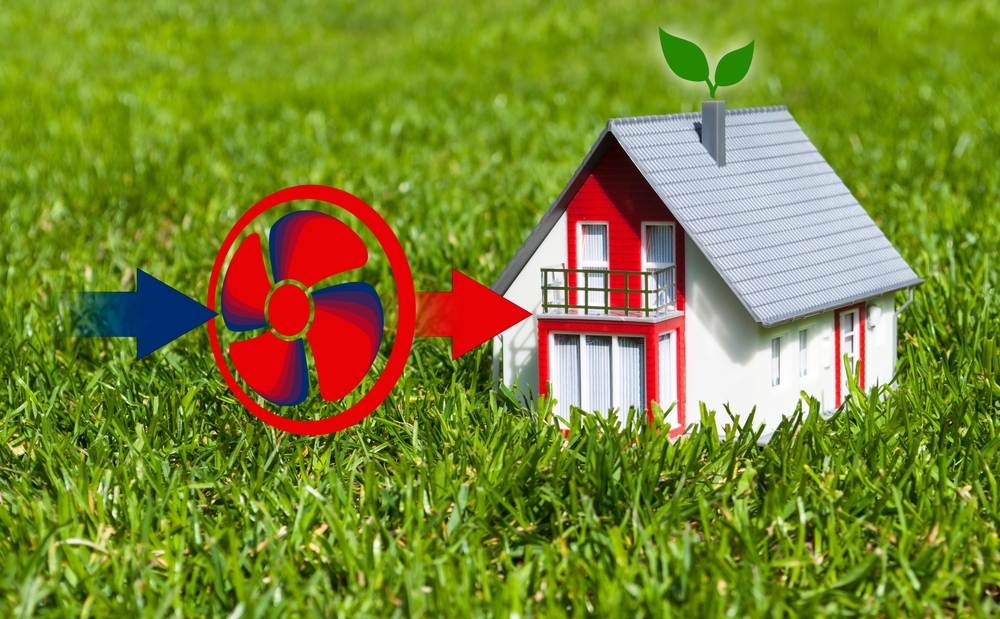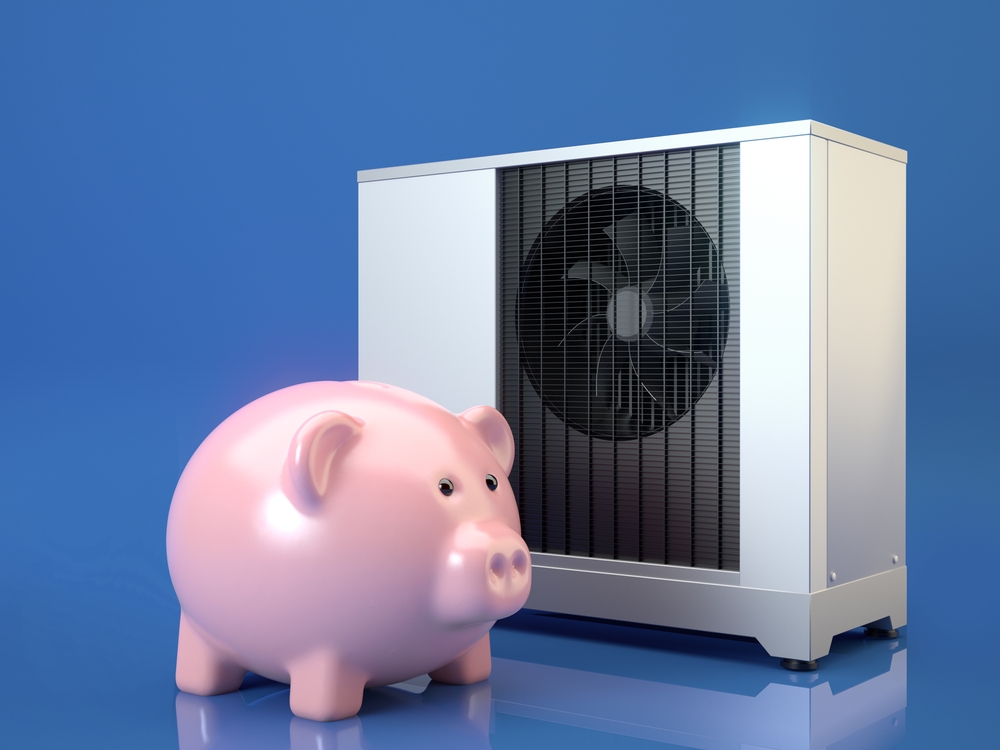Here’s How an Energy-Efficient Heat Pump Won’t Cause Homeowners to Sweat Over Utility Costs
Heating and cooling is the home’s largest energy drain. In fact, 47 percent of the home’s energy use is attributed to heating and cooling. Homeowners that want to make the largest impact on their energy waste and their utility costs might focus on energy-efficient HVAC options
An energy-efficient heat pump can both cool and warm the home, though. Confused? Here’s why an energy-efficient heat pump won’t cause homeowners to sweat over their utility bill.

What is a Heat Pump?
Instead of an air conditioner and a furnace, a heat pump can offer double-duty. Essentially, this system allows for warm air to be sent to cooler areas and vice versa. The heat pump can make hot rooms cooler and cool rooms warmer.
The Department of Energy explains that during warm weather, the pump transfers warm air from the house outdoors. The result is a cooler room or home.
In addition, these pumps are offered in three options:
- Geothermal
- Air-to-air
- Water
Regardless of how heat is transferred, the conduit for the transfer typically involves some type of duct system. However, air-to-air systems can be installed without ducts.
How Much Energy Can Homeowners Save?
The Department of Energy explains that heat pumps can save homeowners 50 percent on their electricity use when heating the home. This is compared to the costs associated with traditional furnaces or baseboard heaters.
In addition, geothermal heat pumps “…can reduce energy use by 30%-60%…” These pumps use a system of pipes installed underground to transfer heat to cool or warm the home. Geothermal pumps also could transfer heat between the home and a source of water (like a pond).

Finding Energy-Efficient Heat Pumps
Homeowners interested in installing energy-efficient heat pumps can search for their options via ENERGY STAR. The site includes information on air-source heat pumps (ASHP) and geothermal heat pumps.
Homeowners can use the site to review different heat pump products and find their best option. In addition, ENERGY STAR also can help homeowners find rebates that could help offset the cost of this investment.
The Price of Heat Pumps
The price of energy efficiency might be a concern for homeowners on a budget. How much does it cost to install different types of energy-efficient heat pumps?
This Old House reports that air-source heat pumps can cost between $3,500-$7,500 (this includes installation) and geothermal systems can cost between $13,000-$36,000. However, there are more affordable options; the site notes that ductless mini-split pumps cost $1,500-$5,000. Those interested in gas-fired heat pumps should expect to pay $4,500-$8,000; the site explains these pumps are good for larger homes with 4,000+ square feet.
Geothermal systems are the priciest options. However, all heat pumps might help homeowners save energy and utility costs, too.

Is a Heat Pump Worth the Investment?
Homeowners might look at the cost of heat pumps and wonder if the price is worth it. HVAC systems are expensive to replace, and homeowners who don’t need to replace their system yet might wait until their current HVAC has reached the end of its effectiveness.
In the meantime, there are ways that homeowners can help their heating and cooling costs from searing their budget. During times of extreme heat or cold, the HVAC might turn on often to try and keep the home at a consistent temperature.
One of the easiest changes that homeowners can make also can help lower their monthly energy costs. Turning the thermostat up to 78 degrees Fahrenheit during the summer and adjusting it down to 68 degrees during the winter could help take some pressure off the system. Some homeowners adjust their home to a very cold temperature in the summer or much warmer in the winter; the more the system has to work, the more money homeowners might be paying.
Homeowners also should remember to service their air conditioner and furnace once each year. This can help ensure the system is running efficiently and can help homeowners fix any problems before they become larger issues. Homeowners also should change the air filter in the HVAC system at least every three months (some may swap out the filter more frequently). A dirty filter could impact the efficiency of the system.
In addition, keep the curtains or blinds shut during the heat of the day (for summer). This can help rooms stay cooler. Homeowners also could use blackout curtains.
If windows are older (and perhaps less energy efficient), homeowners also could add some insulation film over the panes. This is easy to install and it can help provide better insulation for a room. The film also is fairly inexpensive.


